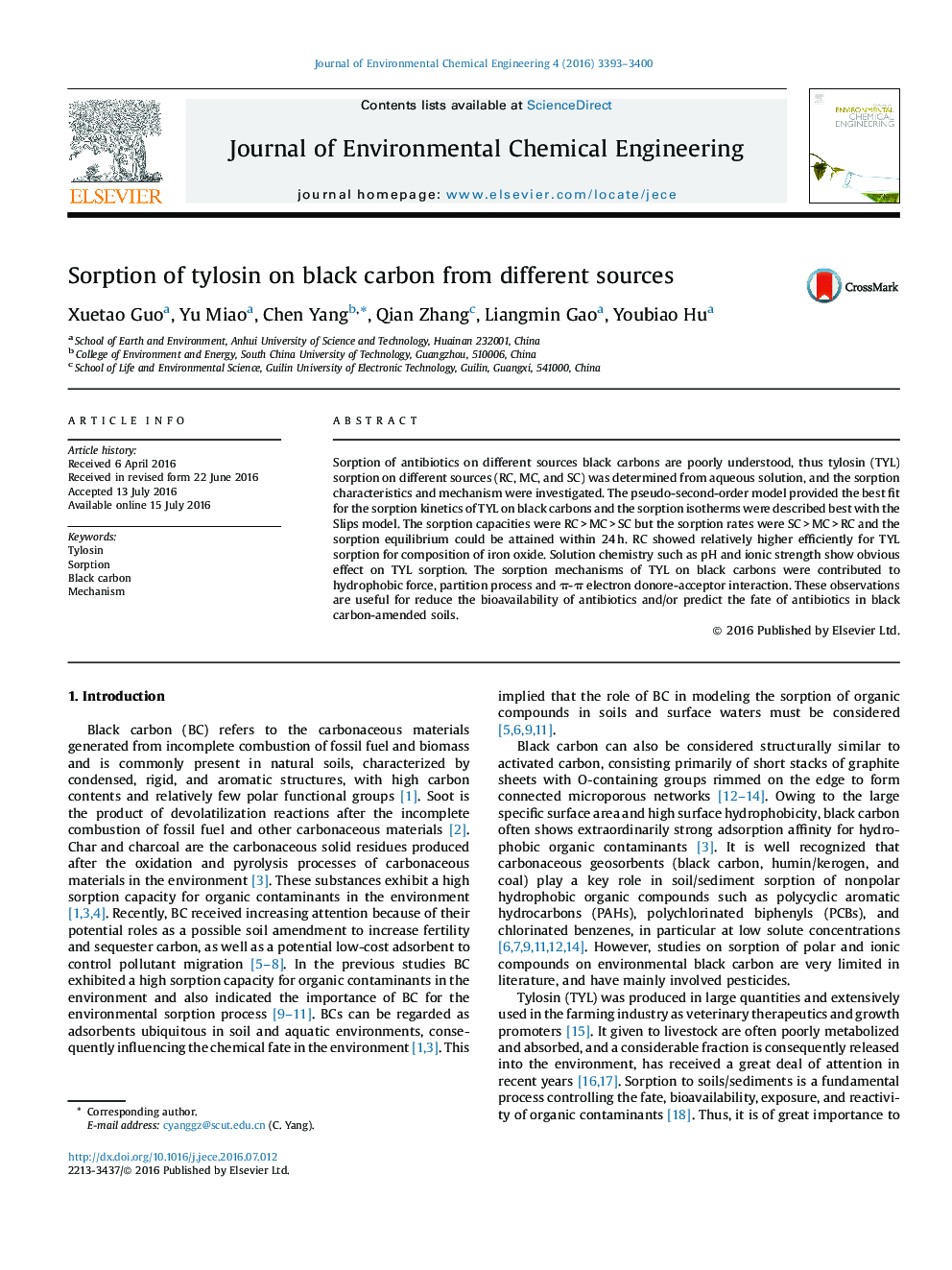| Article ID | Journal | Published Year | Pages | File Type |
|---|---|---|---|---|
| 221606 | Journal of Environmental Chemical Engineering | 2016 | 8 Pages |
•The sorption capacities of different black carbons were RC > MC > SC but the sorption rates were SC > MC > RC.•Solution chemistry such as pH and ionic strength show obvious effect on TYL sorption on different black carbons.•The sorption mechanisms of TYL on different black carbons were contributed to hydrophobic force, partition process and π-π electron donore-acceptor interaction.
Sorption of antibiotics on different sources black carbons are poorly understood, thus tylosin (TYL) sorption on different sources (RC, MC, and SC) was determined from aqueous solution, and the sorption characteristics and mechanism were investigated. The pseudo-second-order model provided the best fit for the sorption kinetics of TYL on black carbons and the sorption isotherms were described best with the Slips model. The sorption capacities were RC > MC > SC but the sorption rates were SC > MC > RC and the sorption equilibrium could be attained within 24 h. RC showed relatively higher efficiently for TYL sorption for composition of iron oxide. Solution chemistry such as pH and ionic strength show obvious effect on TYL sorption. The sorption mechanisms of TYL on black carbons were contributed to hydrophobic force, partition process and π-π electron donore-acceptor interaction. These observations are useful for reduce the bioavailability of antibiotics and/or predict the fate of antibiotics in black carbon-amended soils.
Graphical abstractFigure optionsDownload full-size imageDownload as PowerPoint slide
